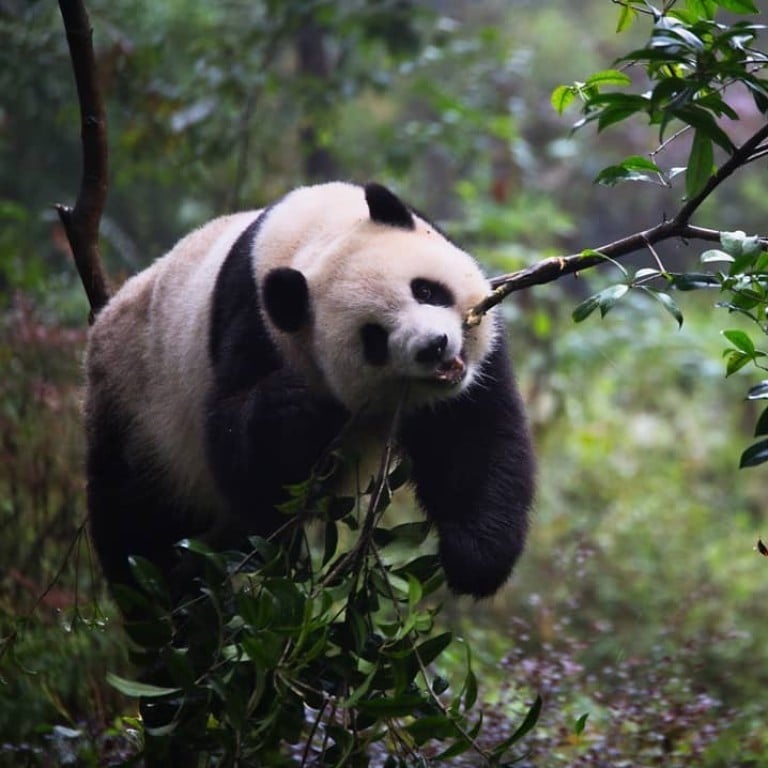7 ethical animal experiences in China and Southeast Asia where you can feed pandas, walk with elephants and swim with dugongs

One of the best things about travelling is getting to know the locals, including all the cute and cuddly creatures you meet along the way. But before planning the ultimate wildlife encounter, it’s important to know how to do so responsibly.
Many animal tourism experiences in Asia inadvertently contribute to animal cruelty, such as elephant rides, tiger selfies and touching marine life, which can destroy underwater ecosystems.
However, getting close to wildlife does not always have to come at the expense of animals. For those who want to make sure their animal encounters are safe for both parties, read on for seven of Asia’s best ethical animal experiences:
Can cats and dogs talk? What I learned from an animal communicator
Diving with dugongs in Coron, Philippines
With its plump body, short flippers and goofy grin, the dugong is an adorable but endangered species that can still be found in the warm coastal waters of the Indian and Pacific Ocean.
Fendi CEO Serge Brunschwig on animal rights and conquering China
In North Busuanga, Palawan in the Philippines, the Dugong Dive Center offers a full day of “dugong watching”, which begins with a 20-minute briefing on dugongs and how to safely approach them, followed by a trip to several of their feeding grounds in the bay. With an 80 per cent success rate, the guides will tell you when it’s safe to jump in and swim along with the friendly and short-sighted sea creature.
Walking with elephants in Chiang Mai, Thailand
Elephants have a long history of being exploited for tourism, but at Elephant Nature Park, a rescue and rehabilitation centre 60km outside Chiang Mai, founder Lek Chailert has created the world’s premier elephant sanctuary for distressed elephants from all over Thailand.
Visitors and volunteers can meet the herd, feed the elephants or even go on jungle walks with them. As of April 2018, elephant bathing is no longer allowed to give the elephants as natural a life as possible. Instead, guests can watch them splash around at a safe distance from the new observation platform.
Meeting orangutans in Borneo, Malaysia
Thanks to deforestation and illegal logging, up to 3,000 orangutans lose their homes (and lives) each year, according to the Orangutan Conservancy. At the Sepilok Orangutan Rehabilitation Centre in the Sabah district of Borneo, 60 to 80 rehabilitated orangutans currently live freely in the 43 square kilometres of protected land at the edge of Kabili-Sepilok Forest Reserve.
Should resorts be using animals in their human wellness programmes?
To see the “gingers of the rainforest”, guests can visit the centre’s nursery to meet young, orphaned orangutans or catch a glimpse of rehabilitated orangutans during twice-daily feeding times from the viewing platform. While sightings are never guaranteed, not seeing one is a good sign the orangutans are adapting well to life in the reserve.
Swimming with whale sharks in Donsol, Philippines
Whale shark selfies are pretty much guaranteed in Oslob, Philippines, where they’re hand-fed by fishermen, but head north to Donsol instead for a more authentic and ethical experience. As an official partner of WWF Philippines, Donsol promotes sustainable whale shark tourism by ensuring that there is no touching, no flash photography and a maximum of six people per boat and whale shark.
Its conservation efforts are working – according to the WWF, more than 100 new whale sharks have been spotted in Donsol in the first half of 2019 alone, compared to just 22 new whale sharks sighted between 2017 and 2018.
Feeding sacred deer in Nara, Japan
In the city of Nara, Japan, the deer aren’t just cute – they’re considered to be holy creatures thanks to the local legend of Takemikazuchi-no-mikoto (a Japanese mythological deity) riding into the city on one of the local Sika deer.
Now the official symbol of the city, more than 1,200 protected deer live in Nara Park where they are free to come and go as they please. To get on their good side, be sure to arm yourselves with plenty of deer crackers and bow often – they’re sacred animals, after all.
Volunteering with pandas in Chengdu, China
Hopelessly clueless about procreation, where would the giant panda be without the help of the China Conservation and Research Center for the Giant Panda (CCRCGP) – China’s largest panda sanctuary which has grown its panda population from six to more than 70 pandas.
No close contact with pandas has been allowed since March 2014, but there is no shortage of demand for the centre’s week-long volunteer programmes where activities include chopping food (apples, carrots and panda bread), prepping bamboo and cleaning panda enclosures (read: scooping poop).
Cuddling with koalas in Brisbane, Australia
No one likes being rudely awakened – least of all koalas who sleep for up to 22 hours per day – so it’s no wonder koala cuddling has been banned in most of Australia except for Queensland and South Australia.
At Lone Pine Koala Sanctuary in Brisbane, Queensland (the world's first and largest koala sanctuary), koala encounters are restricted to small groups of six where guests can learn about koala health, diet, reproduction and conservation, and even get to hold one (if it allows) for the ultimate photo opp.
Want more stories like this? Sign up here. Follow STYLE on Facebook, Instagram, YouTube and Twitter .

Many animal tourism experiences contribute to animal cruelty, but we found ethical animal experiences in China and Southeast Asia that are safe for the animals